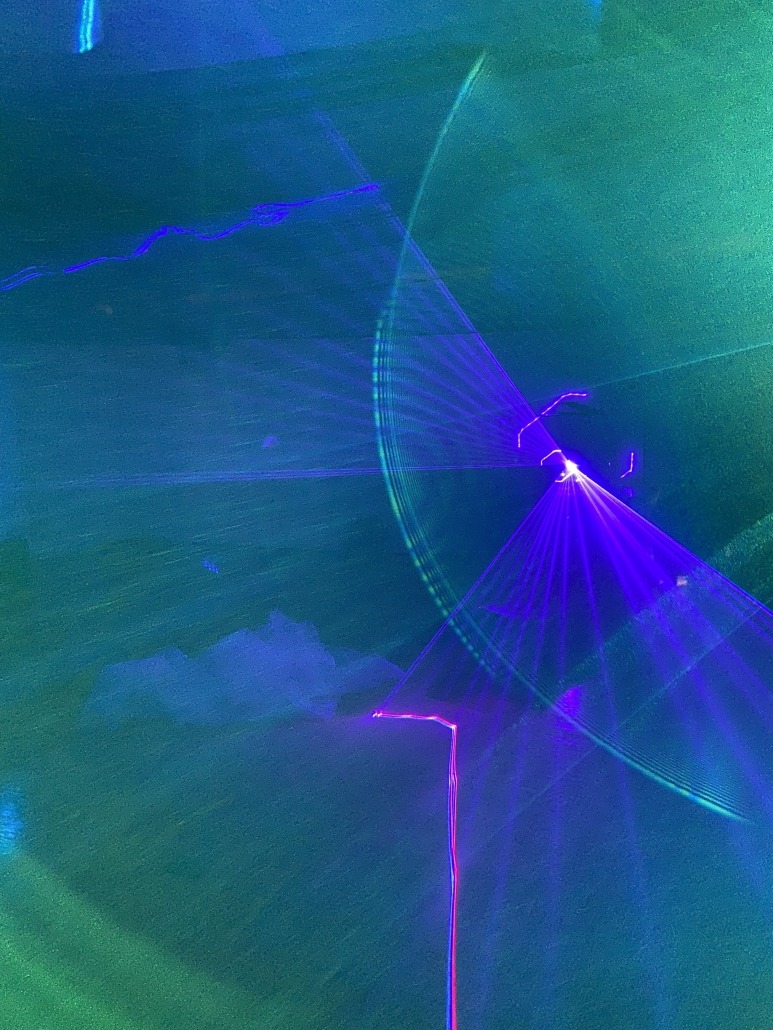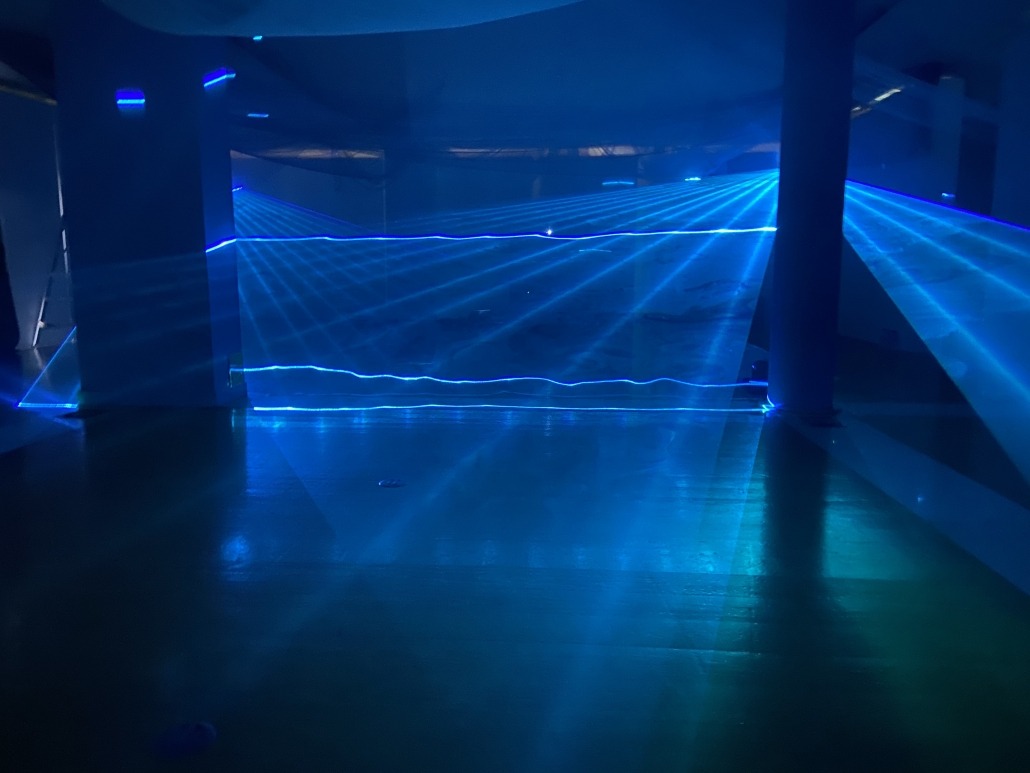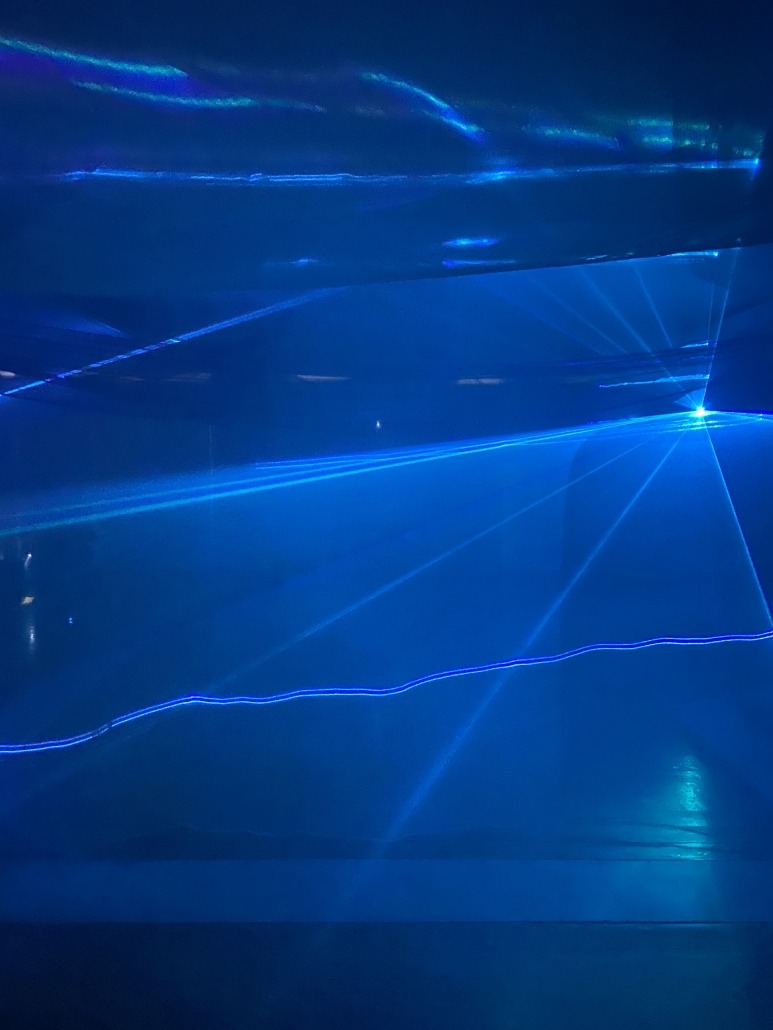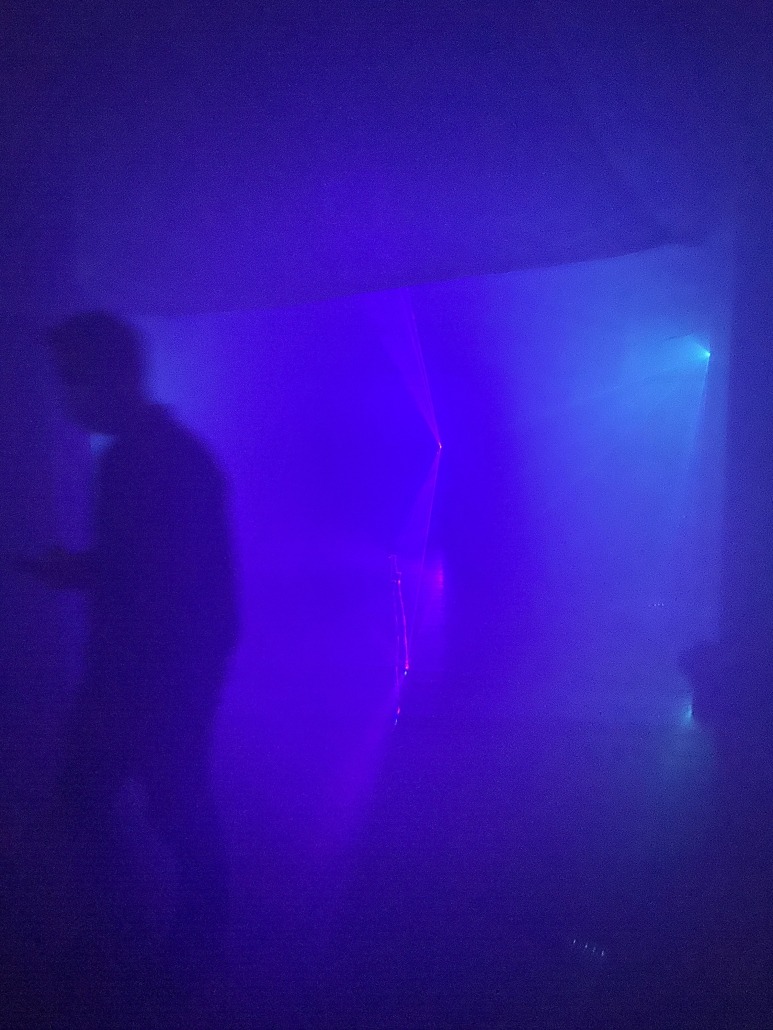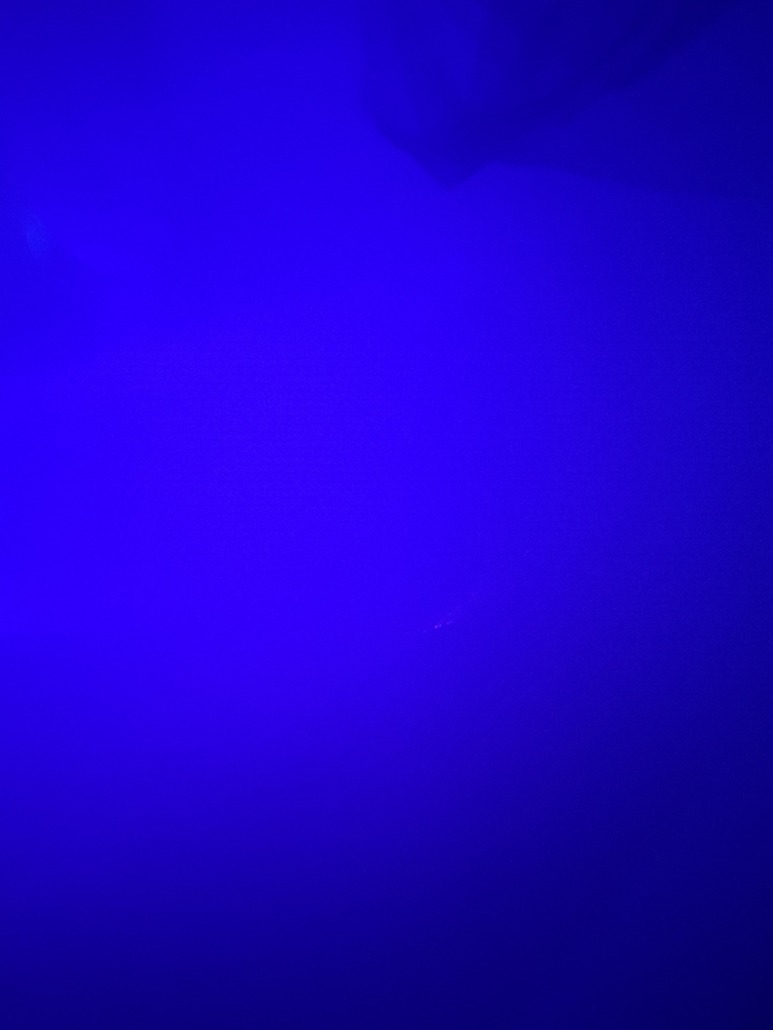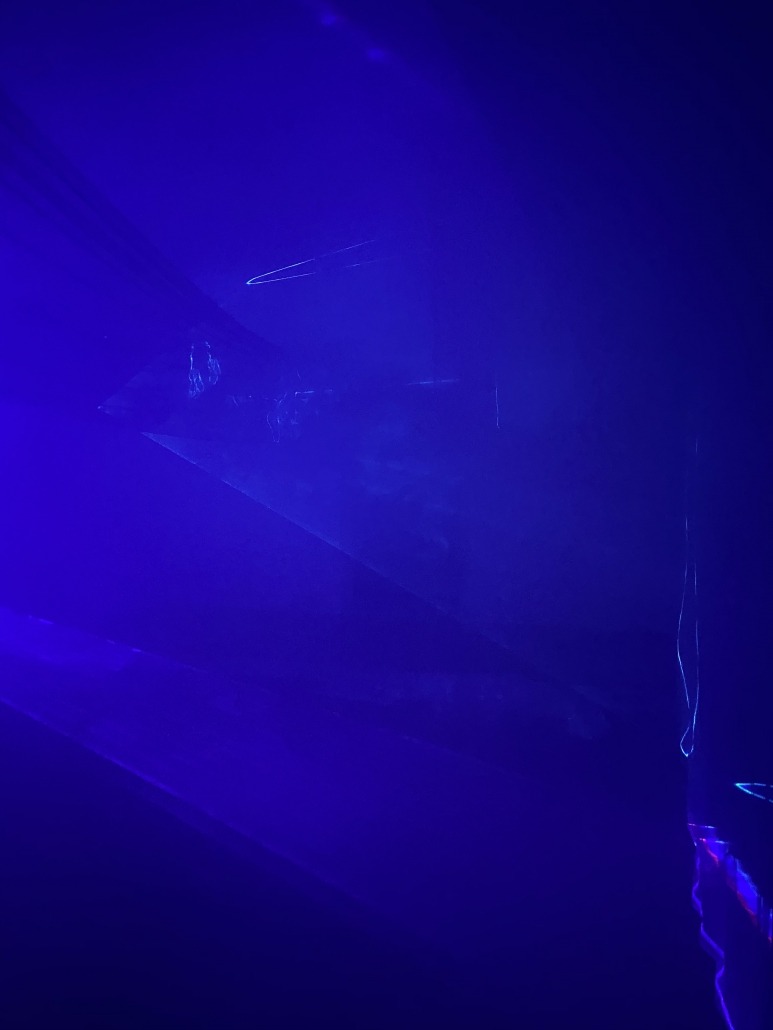Synopsis: Pycnocline is an audiovisual installation that evolved from Luciferina’s ideas of exploring the phenomena of bioluminescence, light communication, sound propagation and masking. Additionally, it approaches the science of water clines[1] and their interference with sound propagation. It continues researching the problem of underwater noise pollution and aims at being a metaphor for the disruptive environment aquatic fauna encounter due to anthropogenic pressures. Moreover, this experiment proposed strategies for perceiving sound vibration in the listener’s body, enhancing place experience and space dislocation. The idea was that the listener would feel trapped and unconfortable with the low frequencies as well as the low visibility that develops. This immersive experience explores the perception of deep-sea environments disturbed by anthropogenic noise. A place for connecting and attuning with one’s senses while experiencing imaginary subaquatic worlds. Combining light, sound and other scenic design techniques, it is an invitation to engage in a personal journey of immersion and connection with both self and space, while experiencing the challenges marine life faces when exposed to anthropogenic noise. Pycnocline experiment was conceived in the context of Criatech Festival in Aveiro in October 2020.
[1]Pycnoclines, haloclines, thermoclines. Cf. David T. Pugh Tides, Surges and Mean Sea-Level (1987).
This site-specific installation combines moments of darkness with light flashes that are created through the suspended fabric and reflecting structures, together with sound elements, recorded from underwater ambients. Low-frequency sounds exploring the typical sonic characteristics of those places and a light environment of randomness and chaos merge together as an attempt to create an experience that resembles the deep-sea impacted by anthropogenic influences. An emotional relation to these places is a first step to creating awareness concerning the richness and unknown underwater world and is vital to fostering its protection and conservation.
Pycnoclines are fluid layers of water where the density is maximum within a body of water. Because of that, they can create a barrier between upper and lower waters hindering vertical transportation of nutrients through the ocean main layers. Subtle turbulence caused by waves is what causes the vertical mixing across a pycnocline, and this nutrient flux is a very important part of the interaction between trophic levels, dictating the growth rate of phytoplankton. What are the anthropogenic impacts in this homeostasis? How can it be felt by these microscopic organisms?
//
- Technique / Materials: audiovisual installation / MacBook Pro, soundcard Focusrite Scarlett 2i4, Enttec DMXIS 70570 USB to DMX interface, laser projector Cameo LUKE 700 RGB, laser projector Nano 3000, PA system, subwoofer, haze machine, fabric, mirrors.
- Software: Ableton live 10, Reaktor 6, DMXIS.
- Dimensions (approx.): variable.
- Date: 2020.
- Location: Aveiro Port Captaincy, Aveiro, Portugal for Criatech Festival.
©Francisca Siza (video)



